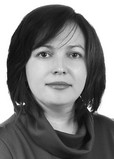Weekly academic physical activity rating by gpaq toolkit
Фотографии:
ˑ:
PhD, Associate Professor A.V. Kabachkova
National Research Tomsk State University, Tomsk
As provided by WHO (2004), motor (physical) activity is an energy-intensive movement of human skeletal muscles. The term “motor activity” is often deemed synonymic to “motor regimen” that means the total individual motor activity within a specific timeframe. It is in this broad understanding that motor activity is an important factor affecting human health, quality and life expectancy, and in this meaning it is considered a key factor of influence on health and life quality and expectancy. We used the Russian version of the Global Physical Activity Questionnaire (GPAQ) to rate the weekly physical activity. Representative sample for the study included the relatively healthy 1-3-year students (n=300, with 100 people of every year) trained at the Tomsk State University Physical Education Department. Additional health data were produced using the Personal Information Questionnaire of our own design. The survey data were analyzed in the absolute and relative values to find benefits and limitations of the GPAQ survey. We found about one of three sampled individuals’ weekly physical activity being under the health minimum, irrespective of the academic year, physical activity schedule and intensity. The GPAQ was found to provide promising tools to analyze the academic physical activity.
Keywords: physical activity, physical inactivity, questionnaire survey.
References
- Lyakh V.I., Rumba O.G., Gorelov A.A. Kriterii i metody issledovaniya dvigatelnoy aktivnosti cheloveka [Criteria and methods of human motor activity]. Teoriya i praktika fiz. kultury. 2013. no.10. pp. 99- 104.
- Rukovodstvo po zapolneniyu voprosnika [Questionnaire manual] [Electronic resource] STEPS tool (main and advanced modules). Switzerland: World Health Organization. Electron. print version. Available at: https://clck.ru/GNZDo (date of access: 04.06.2019).
- Besson H., Brage S., Jakes R.W., Ekelund U., Wareham N.J. Estimating physical activity energy expenditure, sedentary time, and physical activity intensity by self-report in adults. The American Journal of Clinical Nutrition. 2010. 91(1). P. 106-14. doi: 10.3945/ajcn.2009.28432
- Caspersen C.J., Powell K.E., Christenson G.M. Physical activity, exercise, and physical fitness: definitions and distinctions for health-related research. Public Health Reports. 1985. №100(2). – P. 126-131.
- Global Physical Activity Questionnaire (GPAQ). Analysis Guide. Geneva, Switzerland: World Health Organization. 2002. 22 p.
- Global recommendations on physical activity for health. Geneva, Switzerland: World Health Organization. 2010. 58 p.
- Jacobs D.R. Jr., Ainsworth B.E., Hartman T.J., Leon A.S. A simultaneous evaluation of 10 commonly used physical activity questionnaires // Medicine & Science in Sports & Exercise. 1993. 25(1). P. 81–91.
- Karvunls Yu.A., Kapilevich L.V. State and prospects of development of active tourism among youth of Tomsk region. Teoriya i Praktika Fizicheskoy Kultury. 2014. №10. P. 62-65.
- Kyu H.H., Bachman V.F., Alexander L.T., Mumford J.E., Afshin A., Estep K. et al. Physical activity and risk of breast cancer, colon cancer, diabetes, ischemic heart disease, and ischemic stroke events: systematic review and dose-response meta-analysis for the Global Burden of Disease Study 2013 // The British Medical Journal. 2016. 354:i3857. doi.org/10.1136/bmj.i3857
- Resolution WHA57.17. Global strategy on diet, physical activity and health. Resolutions and decisions, annexes. In: Fifty-seventh World Health Assembly. 17-22 May 2004. Geneva: World Health Organization, 2004.
- Shephard R.J. Limits to the measurement of habitual physical activity by questionnaires. British Journal of Sports Medicine. 2003. 37(3). pp. 197–206.
- Sylvia L.G., Bernstein E.E., Hubbard J.L., Keating L., Anderson E.J. Practical guide to measuring physical activity. Journal of the Academy of Nutrition and Dietetics. 2014. no..114(2). pp. 199-208. doi:10.1016/j.jand.2013.09.018



 Журнал "THEORY AND PRACTICE
Журнал "THEORY AND PRACTICE